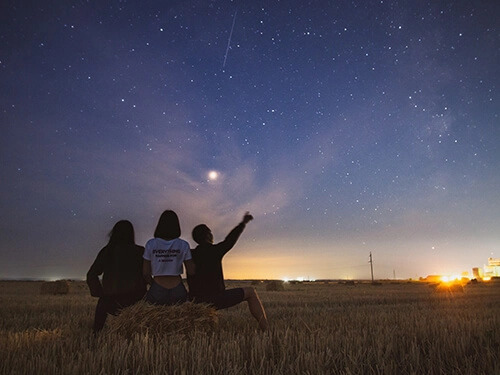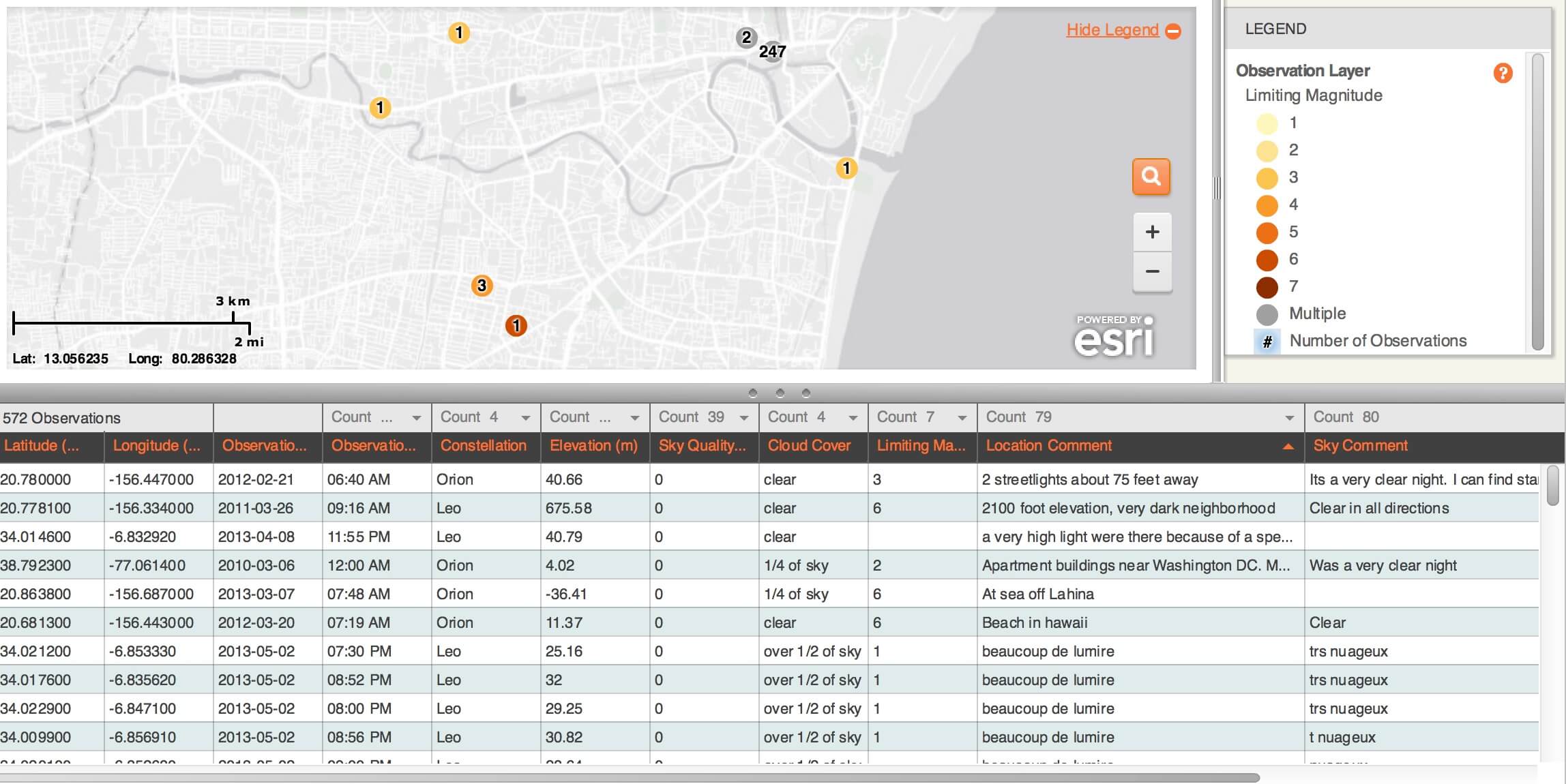Global Night Sky Comparison

About this Inquiry
This inquiry invites students to investigate human impacts on the environment. Specifically, students will examine the relationship between human population, light pollution, and how brightly celestial objects like stars appear in the night sky. Students will analyze data using maps and tables to calculate population densities of cities around the globe. They will work with different layers of map-based information to consider what else is affecting night sky brightness. Students also have an opportunity to practice first-hand data collection and then reflect on possible measurement issues with citizen science data. Ultimately, students develop a possible explanation to a question about the connection between night sky brightness and people, citing data as evidence.
Instructional Days
3 days
Learning Goals
- Collect primary data and use their personal experience to think critically about measurement issues,
- Develop methodological and substantial explanations based on evidence with data collected by Globe at Night citizen scientists, optionally drawing upon students’ experience collecting primary data, and
- Construct an oral argument supported by empirical evidence and scientific reasoning to support or refute an explanation about why Maui and Alexandria have different levels of light pollution, despite having roughly the same populations.

Type of Analysis
- Graphing – Scatterplot
- Mapping – Symbology
- Mapping – Filtering Data by Area
- Mapping – Location Analysis
About this Citizen Science Project:
The Globe at Night program is an international citizen science campaign to raise public awareness of the impact of light pollution by inviting citizen scientists to measure their night sky brightness and submit their observations using a computer or smartphone. Light pollution threatens not only our “right to starlight”, but can affect energy consumption, wildlife, and health. Nearly 190,000 measurements have been contributed by people in 115 countries during the winter and spring campaigns over the last 13 years, making Globe at Night the most successful light pollution awareness project to date!